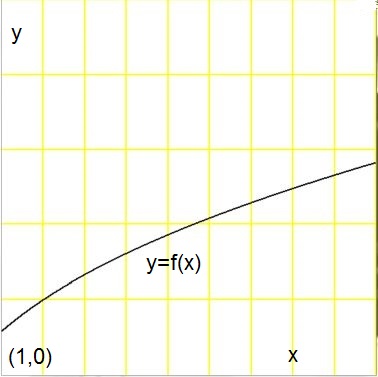
From a computational point of view , this question is related to :
And via this reference it is related to at least three other questions. The common denominator is that backward recursion may be employed here too. For the problem at hand, this backward recursion goes as follows: $$ a_{k-1} = \sqrt[k]{x - a_k} = e^{\ln(x - a_k)/k} \qquad ( x-a_k > 0 ) $$ Starting "from infinity" with $\,x=1\,$ (where $\,\infty = 100\,$ is large enough for our purpose) , but with arbitrary $\;0 < a_\infty < 1$ , the recursion invariably leads to the outcome in the comment by Lucian and Kristoffer Ryhl : $$ L = 0.5818805230597856271212893881 $$ Here is the Pascal program snippet that does the job:program Lucian;Output:
procedure test; const n : integer = 100; { = oo } var k : integer; a,x,d : double; begin while true do begin a := Random; x := 1; d := 1; { Backward recursion } for k := n downto 2 do begin a := exp(ln(x-a)/k); { Error analysis } d := d*a/(x-a)/k; end; Writeln(a,' +/-',d); Readln; end; end;
begin test; end.
5.81880523059786E-0001 +/- 2.39470132977704E-0043 5.81880523059786E-0001 +/- 6.60618483531661E-0045 5.81880523059786E-0001 +/- 4.15120583976206E-0044The generality of $\;0 < a_\infty < 1$ sounds more impressive than it is. Because, apart from the first one, the iterations actually start with numbers close to and somewhat smaller than $1$ ($0 < x-a_n < 1$) : $$ \lim_{n\to\infty} \sqrt[n]{x - a_n} = 1 $$ An estimate for the errors may be obtained by differentiation: $$ d a_{k-1} = d \sqrt[k]{x-a_k} = d a_k \frac{1}{k} \left(x-a_k\right)^{1/k-1} = \frac{a_{k-1}}{k(x-a_k)}d a_k $$ starting with $\,da_k = 1\,$ for some sufficiently large value $n$ of $k$ , in our case $\,n=100$ . It is observed that the error in $\;a_1\;$ can be calculated (more or less) by backward recursion as well. It may well be conjectured that some reasonable bound goes like $\,1/n!$ , meaning that convergence is rather fast. Apart from the first iterations, though, where there are large denominators, due to the fact that $a_{\infty-1}$ is close to $x=1$ .
Notes.
If we change `x := 1` in the program by a slightly different value below $1$ ,
say `x := 0.99` , then the iterations quickly become unstable for some $\;a_\infty$ , even if reasonable precautions are taken.
So it seems that the limit should better be approached from above : $\;x \downarrow 1$ in the first place.
Furthermore, <quote>
it is supposed that $a\ne 0$ and $a\ne 1$ . This is a not proved assumption.
Doing this is something like using the result
to be proved, to prove it. If $\,a=1\,$ or $\,a=0\,$ is the starting value for the recursion (case $\,x=1$ ),
the result will be $\,0\,$ or $\,1\,$
(depending on the parity of $\,n\,$ in the program).</quote>
Killing the fly in the soup ? It's the difference between a closed interval $\,0 \le a \le 1\,$ and an open interval $\,0 < a < 1$ . I know it's a distortion of the original problem, but my proposal would be to replace all radicals $\,\sqrt[n]{a}\,$ by exponents $\,\exp(\ln(a)/n)$ , like I've done in the program ( thus simply obviating the special cases $a \in \{0,1\}$ ) . Wonder if that's acceptable for the OP.
BONUS. Making a graph of the following more general function $f(x)$ might be interesting. $$ f(x) = \lim_{n\to \infty}\sqrt[2]{x-\sqrt[3]{x-\sqrt[4]{x-\cdots-\sqrt[n]{x}}}} $$ So here goes, for $\;1 < x < 10\;$ and $\;0 < y < 5\;$ :

It is conjectured that $f(2) = 1$ . Proof :
Start with $a_n = 1$ , then
$\,a_{n-1} = \sqrt[n]{2 - 1} = 1$ and so on for all $\,a_k\,$ until $\,a_1$ .